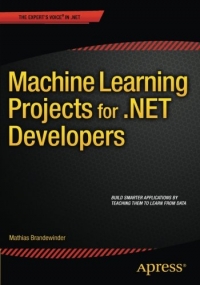
Machine Learning Projects for .NET Developers
Book Description
Machine Learning Projects for .NET Developers shows you how to build smarter .NET applications that learn from data, using simple algorithms and techniques that can be applied to a wide range of real-world problems. You'll code each project in the familiar setting of Visual Studio, while the machine learning logic uses F#, a language ideally suited to machine learning applications in .NET. If you're new to F#, this book will give you everything you need to get started. If you're already familiar with F#, this is your chance to put the language into action in an exciting new context.
Along the way, you'll learn fundamental ideas that can be applied in all kinds of real-world contexts and industries, from advertising to finance, medicine, and scientific research. While some machine learning algorithms use fairly advanced mathematics, this book focuses on simple but effective approaches. If you enjoy hacking code and data, this book is for you.
Book Details
Publisher: Apress
By: Mathias Brandewinder
ISBN: 978-1-4302-6767-6
Year: 2015
Pages: 300
Language: English
File size: 7.5 MB
File format: PDF
eBook
Download: Machine Learning Projects for .NET Developers





 雷达卡
雷达卡





 提升卡
提升卡 置顶卡
置顶卡 沉默卡
沉默卡 变色卡
变色卡 抢沙发
抢沙发 千斤顶
千斤顶 显身卡
显身卡







 京公网安备 11010802022788号
京公网安备 11010802022788号







